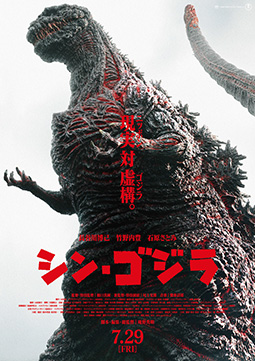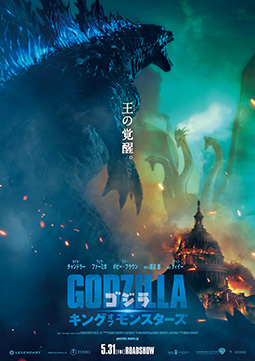
Poster for Godzilla (1954) 
Poster for Shin Godzilla (2016) 
Poster for Godzilla: King of the Monsters (2019)
June 2020
The Enduring Appeal of Godzilla

The giant monster “Godzilla,” capable of destroying cities with overwhelming power yet also a heroic character demonstrating love and kindness, continues to command affection from movie fans around the world.

Godzilla, a Japanese monster movie franchise, is among the world’s most famous monster movie series, rivaling the American-made King Kong movies for primacy. The first Godzilla movie was released in 1954, since when more than thirty films in the series have been produced, together attracting more than 100 million viewers globally. Attesting to the Godzilla franchise’s international appeal, Hollywood has produced four movies, including the latest, which will be released next year.
Godzilla (1954) referenced a real event when a Pacific Ocean bomb test irradiated a Japanese fishing vessel. This incident led to the concept of a hydrogen bomb test driving the monster out of its habitat deep in its sea and eventually stomping across Tokyo. The movie attracted an audience of over 9.61 million.
Ota Keiji, the Chief Godzilla Officer (CGO) at Toho Co., Ltd., says the continuing popularity of Godzilla over more than half a century owes to producers creating movies and other works that are in line with the times while maintaining the Godzilla brand or identity.
"Within Toho, there is what we call the Godzilla Brand Promise; “Godzilla stirs your soul with its overwhelming life force.” We also have brand principles embodied in the brand promise that can be translated into practical guidelines such as “storytelling” and “royal.” Yes, every piece of Godzilla content we develop needs to tell a story, from theatrical entertainment to consumer products, and every Godzilla we describe needs to be about being royal and proud. The Godzilla Brand Promise is Toho’s commitment to providing our brand commitment throughout every aspect of our content business while also reflecting the nature of the times.”
King Kong vs. Godzilla, released in 1962, was a work with excellent entertainment value, directly responding to viewers’ interest in the question of which of the two mega monsters was stronger. And in Mothra vs. Godzilla, released in 1964, the historical background was incorporated into the movie’s theme, focusing on the negative aspects of an excessive boom in tourism development.
Ota says, “The movies stick to being entertaining as monster movies while also changing themes and styles together with the times. I think this is why Godzilla has been loved across many generations.”
The Godzilla franchise soon expanded to other media including television around the globe. In the United States, young people who grew up watching Godzilla have since become Godzilla directors themselves. Ota cites directors like Michael Dougherty of Godzilla: King of the Monsters (2019) as an example of creators who have been lifelong Godzilla fans and taken the opportunity to bring the legendary monster to life.


These directors have taken the familiar appeal of Godzilla and created new images of the monster in their works. In doing so, Hollywood-made Godzilla has also come to be loved by people around the world. Just as people outside of Japan have created new appeal with sushi, Godzilla left his home in Japan, won affection in his adopted countries, and continues to evolve.
GODZILLA VS. KONG, set to be released in 2021, will showcase another new Godzilla, and is sure to entertain us all.

